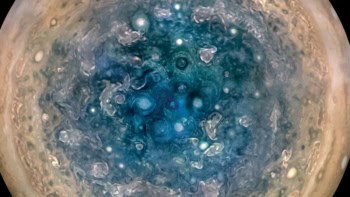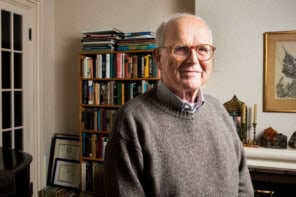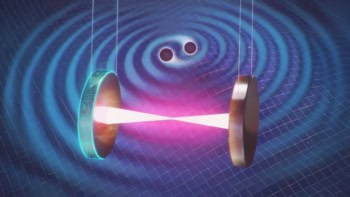Astronomers in the UK, the US and Germany are the first to use a new data-analysis technique that could boost a telescope's ability to search for "exoplanets" -- planets outside our solar system. Surprisingly, the technique makes clever use of the diffraction of light, an effect that had previously prevented telescopes from resolving many exoplanets from their parent stars. The astronomers used the technique to get a combined image and spectrum of a faint star 48 light-years away (Astrophys. J. in press).

Looking for exoplanets is tricky – normally, they cannot be observed directly with telescopes because any light they emit is drowned out by the glare from their parent star. In the last decade or so, however, astronomers have realized that they can observe them in special circumstances – for example, when an exoplanet’s orbit takes it behind its parent star so we no longer see the contribution of its light, causing the star to “wink”.
Astronomers wishing to observe a planet nearby to a star must also contend with the “diffraction limit”, which is a well-known limitation on the spatial resolution of an optical telescope. Even in the best telescopes, as light passes through the aperture it will diffract, causing alternating light and dark concentric rings – called “Airy rings” – to surround high-resolution images of stars and other objects. The radii of these rings depend on the wavelength of the light being observed, and no object can be seen that is smaller than the spot that appears at the centre of them.
Now, an international group led by Laird Close of the University of Arizona and including Niranjan Thatte of the University of Oxford have used a data-processing technique that exploits the Airy rings to retrieve the spectrum of stellar “companion” objects such as exoplanets from the glare of the parent star with a hundred times more spatial resolution than existing techniques.
The idea, which was first proposed in 2002 for space-based telescopes by the US-based astronomers William Sparks and Holland Ford, involves looking at how the Airy rings grow as images are taken at increasing wavelength. If a bright area remained in the same place as the wavelength changed, it would be an indication of a companion object. Therefore, by subtracting the part of the image containing the spreading rings – a procedure known as “spectral deconvolution” – an image of the companion object would be left.
Close and Thatte’s group have now performed spectral deconvolution using a special instrument on ESO’s ground-based Very Large Telescope called SINFONI – an “integral field spectrograph” – which can record a 2D map of a star’s light at 1000 wavelengths. They took data from AB Doradus, a system comprising two pairs of stars 48 light-years away, and analysed it computationally to separate the 2D spectra of one of the smallest stars, AB Doradus C, from the largest, AD Doradus A.
Although AB Doradus C has been imaged before using a less sophisticated technique, this is the first time a detailed image and spectrum has been recorded simultaneously. Astronomers had thought AB Doradus C would be a brown dwarf, a dim star that is too small to produce energy by nuclear fusion. Now, however, Close and Thatte have confirmed that it is just large enough – almost a tenth the mass of our Sun – to be a red dwarf.
Close and Thatte are now planning to use their technique in the hunt for exoplanets. But they will have to wait until the next generation of “extreme adaptive optics” instruments are completed for existing ground-based telescopes, which will be able to effectively cancel-out noise in the Earth’s atmosphere and thus increase image contrast in order to make out faint, distant objects. “This was more of a proof of technique,” Thatte told Physics Web. “Hopefully, though, it will one day enable us to find the Holy Grail – the spectrum of an Earth-like exoplanet.”



